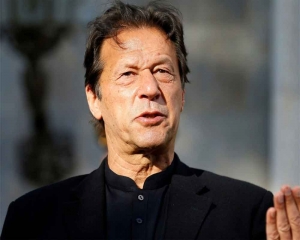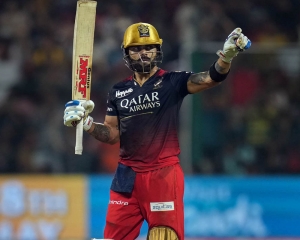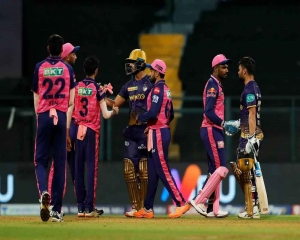The theory fails if Muslim population growth is not seen in isolation but in contrast to the population growth of other communities co-existing with them in a particular region
The census data on religion is partially out in newspapers. The rapidly changing religious demography of West Bengal is once again in academic limelight. Rumours have always been spread by the so-called secularist academia, for obvious reasons, regarding the population growth of Muslims in West Bengal. The left-leaning academia blame the high poverty and low literacy levels among Muslims for their high population growth.
How population growth affects and is affected by literacy and poverty has always been an issue of debate. Malthus was of the view that the high population growth rate causes poverty. However other economists are of the view that poverty is the cause of high population growth in developing countries. However, most economists are almost unanimous about the fact that a higher literacy rate leads to lower population growth in populous developing countries.
The left-leaning academia has found strong theoretical support derived from various demographic theories and studies carried out in relation to population growth with respect to literacy and poverty. They have always explained the increasing population growth rate of Muslims in West Bengal from 21.51 per cent in 1981 to 23.61 per cent in 1991 and further to 25.25 per cent in 2001 and 27 per cent in 2011, in the light of various demographic theories. The theory that higher literacy and lower poverty levels reduce the population growth may seem to have lesser relevance if we employ a cross-section study of different social groups in all the States of India over the last few decades.
The purpose of this article is not to suggest any demographic gap on any religious community of the country, but to explain how reduction in poverty and even increase in literacy failed to control the high population growth of the Muslims. The Muslim population growth should not be seen in isolation but relative to the population growth of other communities co-existing with them in a particular region.
The accepted view that literacy and poverty affects population growth has not brought warranted results in the case of Indian Muslims. The socio-economic conditions of Muslims in India have been compared to Scheduled Caste Hindus, and found to be economically and academically better. The Scheduled Tribes are not considered here since a lot of Muslims fall under this category, which is why they are not mutually exclusive. All the Indian States can be broadly divided into four categories on the basis of relative literacy and poverty levels of Muslims compared to Scheduled Caste Hindus.
Higher literacy and lower poverty rates: Almost all of the major States fall under this category. Kerala, Tamil Nadu, Maharashtra, Gujarat, Odisha, Madhya Pradesh, Karnataka, Andhra Pradesh, Rajasthan, Uttar Pradesh, and Bihar have a higher literacy rate as well as a lower poverty rate of Muslims in comparison to Scheduled Caste Hindus. Although the entire data has not been published on the website of Census of India, the newspaper reports indicate that despite higher literacy and lower poverty ratio, all of these States display higher population growth of Muslims than Scheduled Caste Hindus.
Higher literacy and higher poverty rates: No State in India has a higher literacy as well as higher poverty rates of Muslims than Scheduled Caste Hindus.
lower literacy and lower poverty rates: Delhi, Himachal Pradesh, Punjab, Jammu & Kashmir, and Haryana fall under this category. Here the literacy rate of Muslims is lower than that of Scheduled Caste Hindus, and their poverty levels are also lower than the latter. Despite lesser poverty and literacy rates, the population growth rate of Muslims is not only higher than all other social groups but also higher than Scheduled Caste Hindus.
lower literacy and higher poverty rates: Only two States viz. West Bengal and Assam, have literacy levels of Muslims lower than Scheduled Caste Hindus and the poverty ratio of Muslims higher than the latter. Here again the population growth rate of Muslims are higher than not only non-Muslims but also Scheduled Caste Hindus. In case of West Bengal, the population growth of Muslims during the last decade was 21.8 per cent which is approximately 40 per cent higher than that of Scheduled Caste Hindus and approximately 100 per cent higher than all non-Muslims. The population growth of Muslims was higher in Assam. The population growth of Muslims during the last decade was 29.5 per cent. This was approximately 50 per cent higher than the population growth of Scheduled Caste Hindus.
|
State |
literacy SC 2001 |
literacy Muslims 2001 |
PovertySCrural 2004-05 |
PovertySCurban 2004-05 |
Poverty Muslim rural 2004-05 |
Poverty Muslim 2004-05 |
Population growth of SC 2001-11 |
Population growth of Muslim 2001-11 |
|
Kerala |
82.66 |
89.4 |
21.6 |
32.5 |
17 |
31 |
-2.7 |
13.0 |
|
Tamil Nadu |
63.19 |
82.9 |
31.2 |
40.2 |
10 |
24 |
21.8 |
Higher than SC |
|
Maharashtra |
71.9 |
78.1 |
44.8 |
43.2 |
28 |
55 |
34.3 |
Higher than SC |
|
Gujarat |
70.5 |
73.5 |
21.8 |
16 |
13 |
34 |
13.4 |
Higher than SC |
|
Odisha |
55.53 |
71.3 |
50.2 |
72.6 |
26 |
51 |
18.2 |
Higher than SC |
|
M.P. |
58.57 |
70.3 |
42.8 |
67.3 |
35 |
70 |
23.9 |
Higher than SC |
|
Karnataka |
52.87 |
70.1 |
31.8 |
50.6 |
27 |
49 |
22.3 |
Higher than SC |
|
Andhra P. |
53.52 |
68 |
15.4 |
39.9 |
10 |
49 |
12.5 |
Higher than SC |
|
Rajasthan |
52.24 |
56.6 |
28.7 |
52.1 |
14 |
39 |
26.1 |
Higher than SC |
|
UP |
46.27 |
47.8 |
44.8 |
44.9 |
37 |
43 |
17.7 |
Higher than SC |
|
Bihar |
28.47 |
42 |
64 |
67.2 |
52 |
57 |
27.0 |
Higher than SC |
|
Delhi |
70.85 |
66.6 |
0 |
35.8 |
0 |
29 |
20.0 |
33.4 |
|
H.P. |
70.31 |
57.5 |
19.6 |
5.6 |
4 |
1 |
15.1 |
Higher than SC |
|
Punjab |
56.22 |
51.2 |
14.6 |
16.1 |
4 |
21 |
26.1 |
Higher than SC |
|
J&K |
59.03 |
47.3 |
5.2 |
13.7 |
3 |
11 |
20.1 |
26.1 |
|
Haryana |
55.45 |
40 |
26.8 |
33.4 |
26 |
46 |
25.0 |
45.1 |
|
W.B. |
59.04 |
57.5 |
29.5 |
28.5 |
36 |
44 |
16.3 |
21.8 |
|
Assam |
66.78 |
48.4 |
27.7 |
8.6 |
38 |
13 |
22.2 |
29.5 |
|
Source: Census of India and NSSO. Data on 2011 religious composition are based on recently published news papers. Chhattisgarh, Jharkhand and Northeastern states are not considered in the study due to the lack of information of all the variables. |
||||||||
This table helps to prove that the Muslim population growth has been higher than that of any other religious and social group in India, irrespective of their literacy and poverty levels. Even Scheduled Caste Hindus, who are less literate and poorer than Muslims have lesser population growth rate. The inference drawn by the so-called secular academia that the Muslim population growth is higher than others due to lack of education and increasing poverty among them was based only on West Bengal and Assam, where Muslims were incidentally poorer and less literate than any other social group in these respective States. They, however, ignored the facts from the other major States of India, where the Muslim population growth has been higher than Scheduled Caste Hindus despite having higher literacy and lower poverty rates.
The fact that Kerala is the most literate in India and holds the topmost rank in HDI has always been ignored while taking into account the Muslim population growth in relation to literacy and poverty. The 2001 census indicates that the literacy level of Muslims (89.4%) were higher than Scheduled Caste Hindus (82.6%) and also the 68th NSSO round of poverty headcount survey for the year 2004-05 indicates that the poverty rates in both rural and urban Kerala were higher among the Scheduled Caste Hindus than Muslims. The rural and urban poverty rates among Scheduled Caste Hindus were 21.6 per cent and 32.5 per cent respectively while the same for Muslims were 17 per cent and 31 per cent respectively.
Despite high literacy and low poverty, the population growth rate between the periods of 2001 to 2011 indicates contradictory results. The population growth rate of Muslims was almost two and a half times of the non-Muslims’ population growth. However, compared to Scheduled Caste Hindus, the population growth rate of Muslims was one and a half times higher than the population growth rate of Scheduled Caste Hindus. This is in spite of the fact that Muslims had a lot of international exposure since they work abroad, and the number of Muslims working abroad is more than the number of Scheduled Caste Hindus working abroad.
If we refer to the past censuses, we can see that, the literacy level among Muslims has not always been lower as compared to Scheduled Caste Hindus in West Bengal. Similarly, poverty levels have also not always been higher for Muslims as compared to Scheduled Caste Hindus in West Bengal. But we can notice one universal fact that even in the past censuses the population growths of Muslims have been found higher than Scheduled Caste Hindus. This obviously indicates that there are some other important factors playing a greater role in determining the population growth of Muslims.
(The writer teaches Economics at Delhi University. He can be reached at shoptodinafoundation@gmail.com)

























